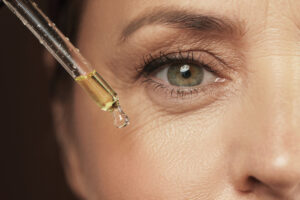Do you know how to lower your triglyceride levels?
Your risk of heart disease may rise if your triglyceride levels are high. Reducing your intake of sugar, carbohydrates, and trans fats, in addition to engaging in regular exercise and making other dietary adjustments, may help lower your triglyceride levels. But this is probably something you already know about, and I bore you, right? I hope not, because my aim for today’s article is to show you that after adjusting to your life, you won’t be among the 25% of adults in the U.S. who have elevated triglycerides.
Let’s see together how you can lower your triglyceride levels in a way that doesn’t seem restrictive and you can still enjoy your life as much as possible.

Eat more fiber
One of the best ways to lower your triglyceride levels is by eating more fiber. Tasty, right? The best sources of dietary fiber include whole grains, fruits, and vegetables. Nuts, seeds, grains, legumes, and many other plant foods are also sources of it.
Increasing the amount of fiber in your diet can help lower your triglyceride levels by slowing down the absorption of sugar and fat in your small intestine. In one study, 117 people who were overweight or obese were shown to have reduced triglyceride levels when they consumed more dietary fiber.
You don’t know how to incorporate fiber into your diet? Rather than having a bagel or sugary cereal for the morning, try a bowl of steel-cut oats with berries. Try a salad with lots of vegetables and bean sprouts for lunch. For dinner, skip the spaghetti and potatoes and instead for brown rice or quinoa.
Eat more unsaturated fats
Doctors claim that substituting carbohydrates in your diet with monounsaturated and polyunsaturated fats will lower your triglyceride levels. Nuts, avocados, and olive oil are examples of foods high in monounsaturated fats. Nuts and seeds including walnuts, flaxseeds, and chia seeds, as well as vegetable oils and fatty fish, contain polyunsaturated fats.
Eaters of polyunsaturated fat reported reduced blood triglyceride levels, while consumers of saturated fat reported higher blood triglyceride levels. Because everyone enjoys a good, delicious meal, make the most of it by substituting olive oil with sunflower oil or another healthy fat. Need a helping hand in cooking with olive oil? Check out this amazing recipe book that contains over 50 tasty recipes for you and your family. It’s available in both Kindle and paperback versions. I ordered mine for Kindle!
Say welcome to nuts, avocados, and chicken breast without the skin, and say goodbye to chips, french fries, and crackers for a healthier lifestyle.
Ditch the red meat and eat more fish
The benefits of fatty fish on heart health and its capacity to decrease blood triglycerides are widely recognized. Its omega-3 fatty acid content—a kind of polyunsaturated fatty acid that is deemed essential, meaning you must obtain it through diet—is primarily responsible for this.
Therefore, the Dietary Guidelines for Americans advise eating two meals of fatty fish each week to lower your triglyceride levels and lessen your risk of heart disease and stroke. Omega-3 content is high in albacore tuna, sardines, mackerel, herring, and lake trout. You’re going to like one of these, I’m sure of it.
Stick to regular meals
One thing that can spike triglyceride levels is to eat inconsistently. For example, a lot of people skip eating breakfast just because they’re “too busy.” If this applies to you as well, try to prepare everything the day before. Like overnight oats or a sandwich with omelet and avocado. Just reheat it, and voila, your breakfast is served!
If you want to lower your triglyceride levels, try to eat at certain hours (regardless of how many meals you’re having), depending on your schedule.
Stop eating sugar (or at least limit the intake)
Another way to lower your triglyceride levels is by limiting your intake of sugar. I know it’s hard because almost everything from the store contains sugar, but it is possible. The first thing you could do is learn how to read the product labels and look out for added sugars. Brown sugar, corn syrup, fruit juice concentrates, words that end in “ose” (dextrose, fructose, glucose, lactose, maltose, sucrose), honey, cane syrup, cane sugar, molasses, and raw sugar are among the terms to search for.
You see, in addition to other heart disease risk factors, a rise in blood triglyceride levels might result from the excess sugar in your diet being converted to triglycerides.
Be mindful of items that have added sugar, such as flavored yogurt, ice cream, soda, baked goods, candies, and most morning cereals.

Get moving
We got to my favorite part of the article! I aim to convince more and more seniors to get into regular exercise, even if it’s just 30 minutes a day. The trick is to maintain the habit consistently, but also to learn when to rest if it’s too much!
Participating in regular exercise might help you lose weight and improve your health if you’re carrying extra weight. Whenever possible, try to get in 30 minutes of activity five days a week. If you feel up to it, try to get in an hour a day, six days a week.
The good thing is that you don’t have to be an athlete, since any type of physical movement helps. Ride a bike, have some fun with a hoola hop, or lift some light weights.
Consume alcohol responsibly
While it is totally OK to have a glass of wine or champagne when you go to a party, consuming alcohol daily isn’t beneficial at all. Especially if you have issues with the level of your triglycerides. Make the switch to lime-squeezed sparkling water. Alternatively, during the summer, you may try a great-tasting, sugar-free herbal iced tea blend.
Go to regular checkups
A basic blood test can identify elevated triglycerides. Your doctor could also search for related medical issues. These include obesity, diabetes, a lazy thyroid gland, and renal illness. The results of the triglyceride test stack up as follows: Less than 150 mg/dL is normal. in between, 150–199 mg/dL; elevated, 200–499 mg/dL; and extremely high, up to 500 mg/dL.
Bottom line:
The things you eat and how you live can significantly affect your triglyceride levels. You may reduce your blood triglycerides by eating healthy, unsaturated fats rather than trans fats, consuming fewer carbohydrates and added sweets, and engaging in regular exercise.
You don’t have to completely change your diet and way of life right now. To develop longer-lasting, more sustainable improvements that are simpler to maintain, try trying a couple of the above suggestions and gradually introducing more tactics into your routine.
However, if none of these lifestyles changes your condition and you’re still facing issues with high levels of triglycerides, it may be better if you speak to a doctor.
How are your triglyceride levels, and when was the last time you went to a doctor for a checkup? Even if you don’t have any symptoms or you’re feeling good, an annual visit to the doctor is mandatory to monitor your health.
You may also be interested in reading about 6 Amazing Lifestyle Changes to Improve Vitamin D Levels.




















One Response
Thanks for the great information
Helen